After much fanfare and some gnashing of teeth, 2016 has finally ended. At Day 4 of the new year, we look back at some great – good and bad – tech and business news that shook the islands of the Philippines.
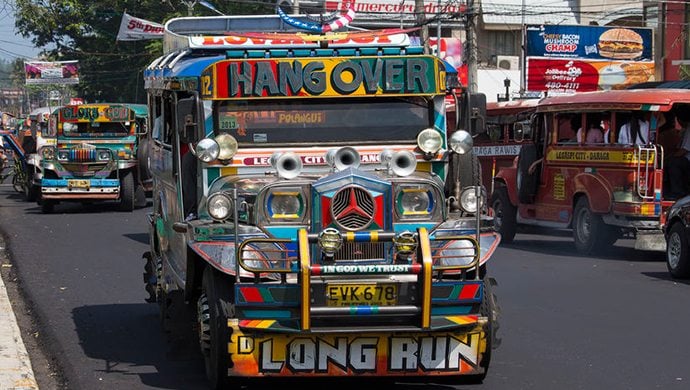
The year 2016 was a big one for the Philippines. After a short period of stability (relatively, at least by Philippine standards), the year that was has been volatile at worst and shaky at best. For Filipinos, it seemed that 2016 was a year of extremes – ecstatically good news or hideously bad news.
We love lists, so for a yearender/yearstarter, we made a list of the top news that made an impact in the Philippine business and tech environment.
Let’s start with the bad news.
1. Fake news, trolls, and the alarming reality that a lot of people can’t tell the difference between satire and truth
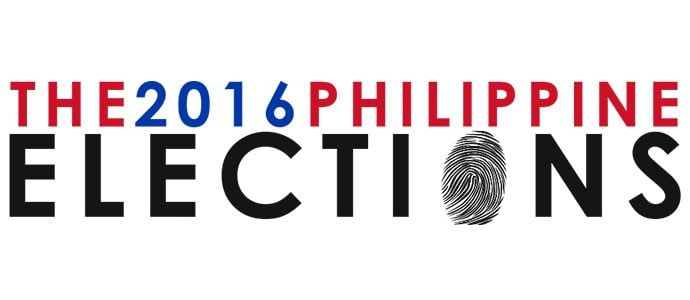
To say that the 2016 Philippine National elections brought out the worst in people is not straying too far from the truth if all the mudslinging in mass media is used as basis. The five candidates for President and the six candidates for Vice-President were in the middle of a maelstrom of accusation of corruption, mysogynism, murder, and blatant character assassination. Political parties accused each other of telling half-truths and blatant lies channeled through blog sites and social media. The accusations were not unfounded, though. For months leading up to the May 2016 election, mass media was filled with satire and comedy websites being accused of propagating fake news, opinionated celebrities (and even average citizens) being cyberbullied, actual fake news site, and an uncovered system of paid disinformation propaganda.
Also read: Facebook is slowly accepting its new role as the most powerful media company in the world
Outcries from the international community, a lot of hurt feelings, and several police reports later, the Philippines has elected and installed a new president and, in the process, brought to light a dawning realisation of the extent of mass media’s power to shape public opinion.
2. The best thing we never had. Probably.
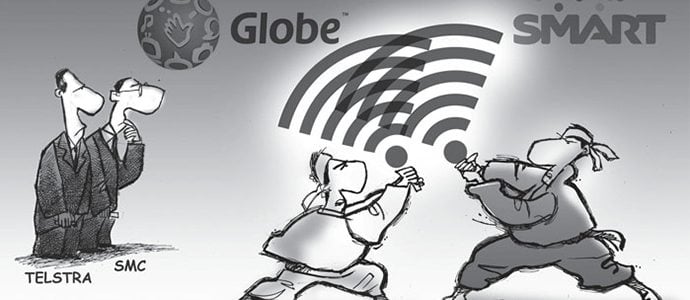
The first quarter of 2016 was abuzz with the news of a partnership between Philippines’ San Miguel Corporation (SMC) and Australia’s Telstra to build a third player in the country’s telco industry currently dominated by PLDT and Globe. This was supposed to be the answer to the prayers of a country winning top spot for any Worst State of the Internet Award being given out; introducing a strong third player promises a fierce competition that would result to better coverage and lowered cost of service.
Also read: TPG Telecom wins bid to become Singapore’s 4th telco, MyRepublic loses out
But the hope fizzled by the end of the quarter when talks between SMC and Telstra came to an end and SMC announced the shelving of their plan to build a telco player. This announcement was cemented (and hopes dashed even more) by the US$1 billion purchase of SMC infrastructure, equally shared between PLDT and Globe. The country can kiss it’s hopes for a more competitive telco industry goodbye for now.
3. The best place for laundering. Money, that is.
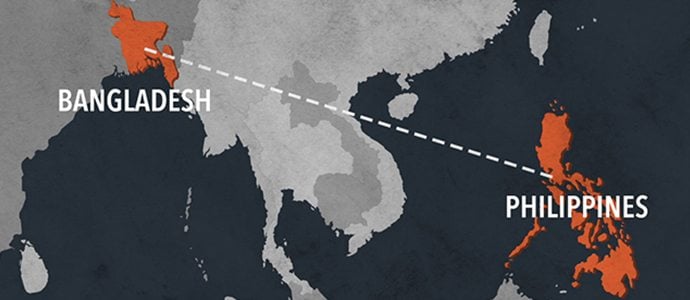
February 2016 found the Philippines in the global spotlight when hackers attacked the Federal Reserve Bank of New York and transferred US$81 million out of Bangladesh Central Bank’s account and into the Philippines’ Rizal Commercial Banking Corporation (RCBC). A senate probe that lasted two months ensued and, despite the progress, ended because the senators leading the investigation lost their seats after the national elections.
Also read: As 2017 walks in, get yourself ready to face these cyber security threats
The fallout of the biggest money laundering case in Philippine history? Several fired bank employees, a resignation from the RCBC president, a Php1 billion penalty on RCBC from Philippine Central Bank for their involvement, the Philippines being at risk of being blacklisted by the Financial Action Task Force, a body comprised of 37 countries developing and promoting policies to combat money laundering and terrorist financing, and a long, hard look at the vulnerability from security breaches of even the most sophisticated financial institutions.
4. If you’re a voter last election, there’s a possibility that there’s another virtual you somewhere
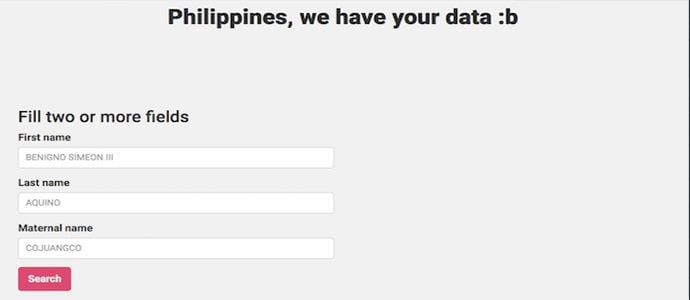
The national election occupied most of the Philippines’ 2016 and given that all eyes are on them, one would assume that the Commission on Elections (COMELEC) would make sure that they have their back fully covered. Well, that assumption was proven incorrect when a 23-year-old broke into and downloaded the COMELEC database, allegedly in a bid to keep COMELEC on their toes in terms of security. COMELEC tried to downplay the breach but was outed by security firm Trend Micro who said that crucial data was made available to everyone. The hackers uploaded the entire database that includes social security number, fingerprint data, and passport information of the country’s 55 million voters into a website with a very nice and user-friendly search engine.
Needless to say, the incident, instigated by people who uploaded the data “for lulz” (their exact words in the website), highlighted how the Philippines (its government institutions in particular) is falling behind in cyber security.
Enough of the bad news. Let’s wash the bitter taste of disappointment with these wins, shall we?
5. A Filipino fairy was sent to space to watch over the weather, among other things

It was a good year for space fans. The Philippines has launched to the International Space Station (ISS) its very first microsatellite called Diwata-1 in March. Diwata (or “fairy” in English) was launched into orbit in April with the engineering team behind it receiving its first communication just hours after its deployment. The microsatellite was built for earth observation missions related to weather observation, environmental monitoring, and disaster risk management. Primary control of Diwata-1 will fall to the Philippine Earth Data Resources Observation (PEDRO) Center, a ground station based in the Philippines.
The team behind that built it comprised of nine Filipino engineers from the Department of Science and Technology Advanced Science and Technology Institute (DOST-ASTI) and the University of the Philippines in collaboration with scientists and engineers from two Japanese universities. As progress in science goes, this is a huge step in the creation of the Philippine Space Agency.
6. Achievement unlocked in reaching cranked up levels of international eSports events
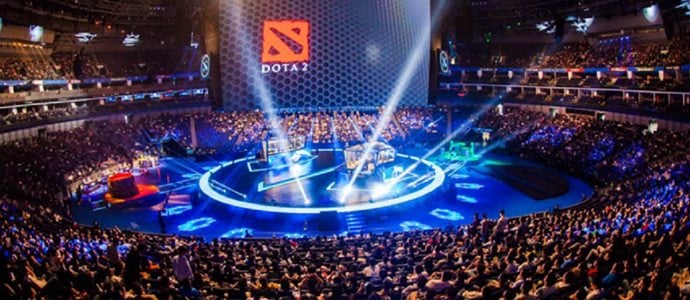
The country hosted several international eSports tournaments, most notably ESL One Manila in April, a premium international Dota 2 tournament that featured 8 of the world’s best teams battling for their share of US$250,000 prize money pool, and Manila Major in June, a tri-annual Dota 2 series of US$300,000 prize pool.
Also read: League of Legends creator set to open offices in Vietnam, Indonesia, Philippines, and Thailand
There were apprehension as to how the tournaments would turn out but, contrary to many’s expectation, the tournaments were not only successful but has also raised the bar in terms of production value and put the Philippines in the map as best in class venue for upcoming events.
7. Filipino electronic athletes make headlines by winning tournaments. Lots of them.
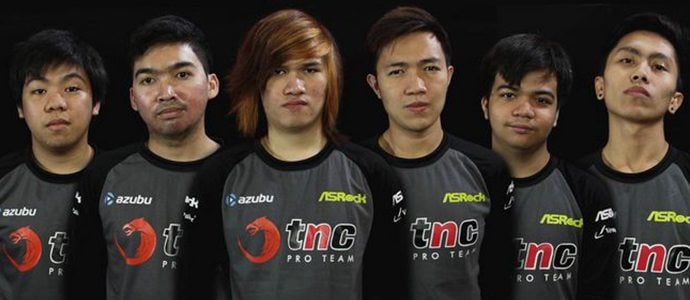
There was an onslaught of top-level placings of Philippine electronic athletes in internationally acclaimed eSports events. This year marked the comeback of Filipino teams at Seattle-based Dota 2 premiere event The International, with two teams TNC Pro Team and Execration) qualifying for the multi-million tournament. Execration took the third place in the regional qualifiers and, while eliminated in the wildcard bracket, beat North American team compLexity. TNC, on the other hand, secured a top 8 finish by eliminating tournament favorite and two-time Dota 2 Major champion Team OG in what is now being regarded as the biggest upset in the history of Dota 2.
In the fighting games, professional Blazblue player Alden Jacob won two international championships – the Manila Cup and the South East Asian Major in Singapore. Another athlete, Tekken veteran Alexandre Laverez, also went on to qualify for the International King of Iron Fist Tournament and finished within the top eight. These wins hailed the rise of the Filipino eSports athletes and made it abundantly clear that the Philippines can produce high-caliber players that can compete in an international scale.
8. The Philippine government finally clued in on digitally-empowering the citizenry
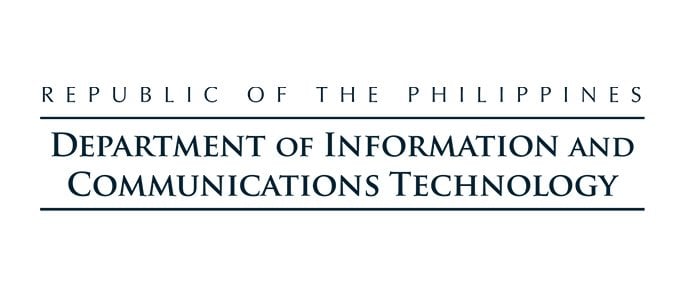
In one of his last acts as President of the Philippines, Benigno Aquino III signed into law the measure forming a Department of Information and Communications Technology (DICT). The measure, which has been advocated by the business community for nearly a decade, will act as the primary formulator and implementer of national policies, plans, programs, and guidelines promoting the development and use of information and communications technology (ICT) in the country, prescribe regulations for ICT infrastructure, coordinate all national ICT plans, and assess, review, and support ICT research and development programs.
The formalisation of this department is a huge step for the Philippine government in the bid of achieving a globally competitive, innovative, and ICT-enabled governance.
9. Barrelling through an upward trajectory for economic growth
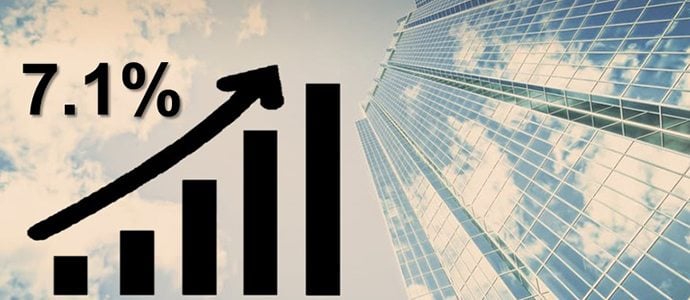
Despite the devastating calamities, the volatile national election, and the various blows to the business and financial sectors (some of which are previously mentioned in this article), the Philippines still outperformed other Asian countries in economic growth, increasing up to 7.1 per cent in the third quarter. This growth can be attributed to the recovery of the agricultural sector, the sustainability of private and public sector investments, and increased consumption.
Domestically driven, gifted with a young population, and backed by US$50 billion revenue from remittances and outsourcing, the Philippines is projected to remain the fastest growing in Asia with foreseen global risks not having a significant effect in its growth.
___
Featured image credit: olegd / 123RF Stock Photo
Philippine election image: NewsCentralPH
Telco wars image: Business Mirror
Bangladesh/RP image: Rappler
We have your data image: InterAksyon
Diwata-1 team image: Official Gazette of the Republic of the Philippines
ESL One Manila image: Dota Blast
TNC Pro Team image: E Gamers World
DICT logo image: iGovPhil
RP growth image: The LOBBYiST
The post The year that was: Top business and tech news that rocked the Philippines in 2016 appeared first on e27.